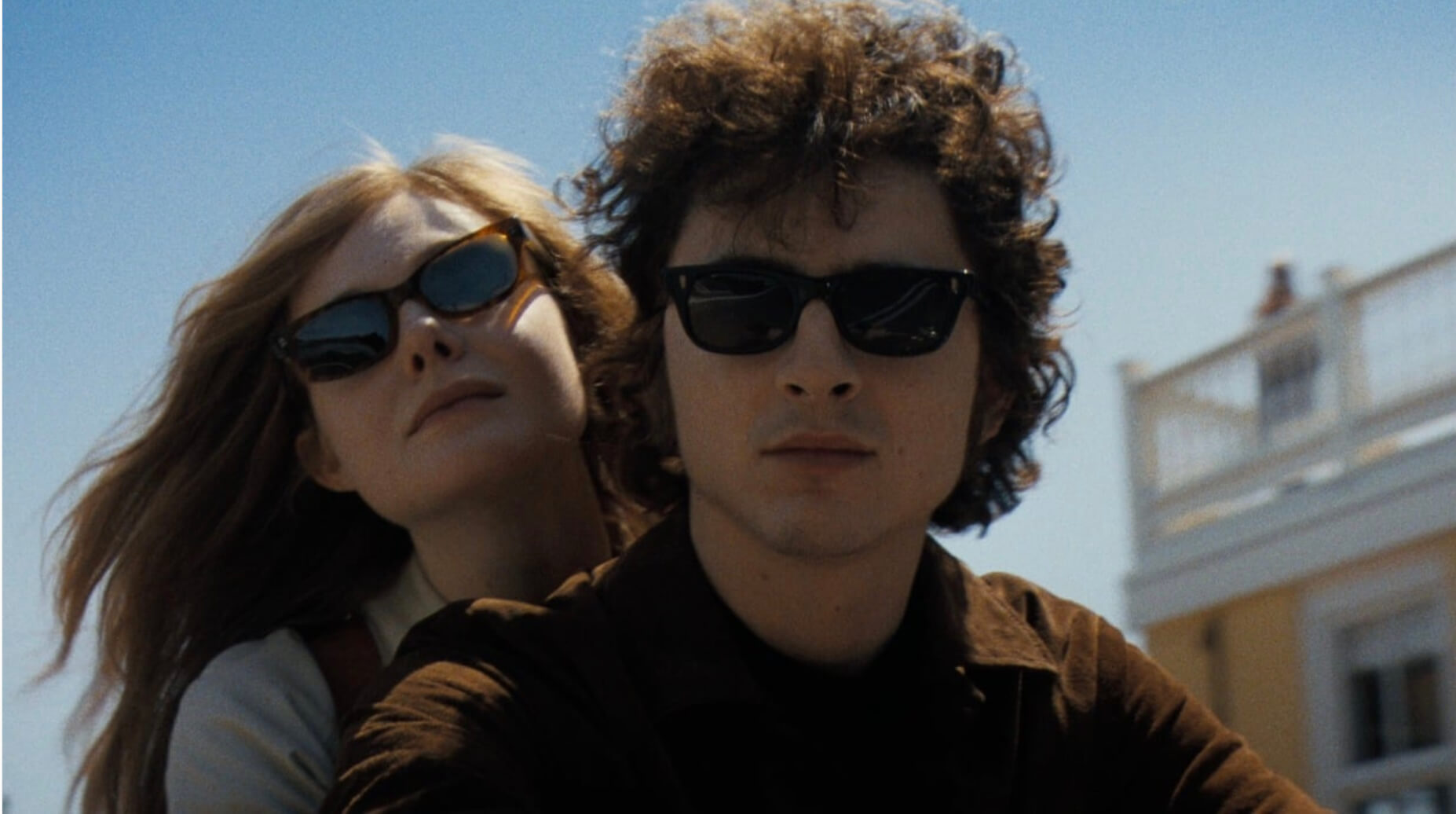‘A Complete Unknown’ proves that one thing about Bob Dylan will certainly endure
The new Dylan movie packs an emotional wallop, even if it fakes just like a biopic

Timothee Chalamet and Elle Fanning in A Complete Unknown. Courtesy of Fox Searchlight
Warning: This review contains spoilers.
Walking out after a screening of the new Bob Dylan biopic A Complete Unknown, my partner Caroline gushed about it, saying how much she adored it. But I told her I was still processing my feelings. Dylan is my all-time favorite artist, so this one’s a toughie for me — even if Timothee Chalamet deserves an A for Effort for his earnest, dogged portrayal of young Bob.
The next night, though, after Caroline and I listened to actual Dylan songs from the period under review in this film (“Like a Rolling Stone,” “It’s All Over Now Baby Blue”), her tune changed: “You know, you have a point,” she said.
Meaning that the actual Dylan music she’d just been imbibing was so truthful, unvarnished and potent — the Real Deal, in other words — that the movie began to seem more like a candy-colored confection recounting a chronological string of events, some true and some invented.
To put it another way: Many key points in the Dylan mythos are only touched on before the directorial finger moves on to the next highlight. No attempt is made to scramble the timeline impressionistically (useful often for onscreen “real-life” storytelling), or to give much in the way of backstory about the myriad dramatis personae involved in Dylan’s life and music.
Many (but not all) of the many actual folks who came and went in the affairs of Bob are briefly portrayed and get name-checked in the lengthy credit crawl at the end — Joe Boyd (who ran sound at Newport), Al Kooper, Dave Van Ronk, Bob Neuwirth, Maria Muldaur, Tom Wilson, Harold Leventhal, Paul “Noel” Stookey, Alan Lomax and Mark Spoelstra.
Some do not even rate a credit — for example, the Black dude who plays pianist Paul Griffin in the “Like a Rolling Stone” recording session. Or my friend Peter Yarrow who emceed at Newport, just in case you weren’t paying attention.
One incident completely absent from this new film’s “Dylan Goes Electric” sequence at the 1965 Newport Folk Festival is Jim Kweskin Jug Band member Mel Lyman ambling onstage after Dylan walks off to blow a 20-minute harp solo improv on the 1763 Calvinist hymn “Rock of Ages,” in order to chill out and soothe a tumultuously divided crowd.
(Legend has it that Lyman, who went on to become the spiritual leader of Boston’s Fort Hill Community, confronted Dylan at the festival after-party and attempted to talk Bob into abandoning his new electric direction and return to his folk music roots. Advice which Dylan, of course, chose to ignore — to our ever-lasting benefit.)
A long procession of characters shuffle on and off the screen in little more than brief cameos in order to give the film — I dunno — a fleeting sense of verisimilitude?
Some are given meatier, more substantial roles.
Suze Rotolo (a very lovely lady in real life who I was fortunate to get to know before she passed) appears here, disguised as “Sylvie Russo” — perhaps her estate objected to the use of her real name? Joan Baez gets a lot more screen time in the form of actress Monica Barbaro (who doesn’t look a hell of a lot like Joan, but sings OK), as does Boyd Holbrook as Johnny Cash.
If you want the actual taste and texture of Bob Dylan in his prime, you’d be better off with D.A. Pennebaker’s superb 1967 Don’t Look Back account of Dylan’s 1965 concert tour of England, or No Direction Home, Martin Scorsese’s 2005 remix of Pennebaker’s outtakes.
But these issues are minor quibbles. Let’s look at the big enchilada.
Does the film pack a dramatic punch? Yes, it does — in spades.
Against my better judgment, I briefly teared up at the scene where Dylan is initially roundly booed at Newport by his rabid folkie fans for going electric, upending the entire Newport Folk Festival tradition — before he ultimately roars off on his Triumph a la Brando in The Wild One down that Lost Highway where Fate (it is implied) will eventually catch up with him in the form of his infamous Motorcycle Accident. That happened many months later in Woodstock, not Newport — but hey, it’s a biopic, right? And as the phrase from the 1962 John Ford-directed film The Man Who Shot Liberty Valance goes: “When the legend becomes fact, print the legend.”
A Complete Unknown is sure to prove to be very big box office indeed, and should attract legions of fans around the world — most likely people who know next to nothing about Dylan — or the casual Dylan fan who isn’t invested in the Dylan mythos per se. They all will joyfully embrace this film as the Gospel, even if Dylan appears on occasion to be a callous and rude opportunist, which may unsettle some folks who would prefer mere hagiography.
The likely success of the film is a good thing for the continued dissemination of Bob’s genius songs worldwide. And this film rises and falls on the everlasting strength of these songs.
Whether or not you enjoy Chalamet’s Dylan impression or the whole vibe of the film (there is very little actual NYC verisimilitude in the Greenwich Village and CBS Records mise-en-scene, or in the Newport Folk Festival re-creation by the way), these songs are the lifeblood of this film.
And these songs are what will endure and continue to circle our planet long after all the principals involved in either this film or in what actually went down “in real life” are gone — as long as there is still a planet left to circle around.
















